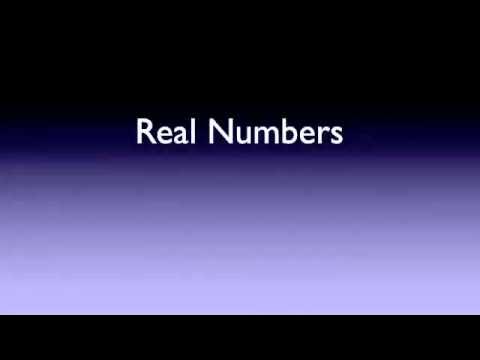Discrete Math - 2.1.1 Introduction to Sets
Summary
TLDRThis educational video offers an introduction to the concept of sets in mathematics, covering essential vocabulary and notation. It explains that a set is an unordered collection of distinct objects, using the example of siblings to illustrate. The video introduces various types of sets, including natural numbers (N), whole numbers (W), integers (Z), rational numbers (Q), real numbers (R), and complex numbers (C). It also discusses different notations for representing sets, such as roster notation for discrete sets and set builder notation for both discrete and continuous sets. Interval notation for continuous sets is also explained, along with the concepts of the universal set and the empty set, setting the stage for further exploration of set relationships.
Takeaways
- 📚 A set is an unordered collection of distinct objects.
- 👦 Elements of a set are separated by commas and can be listed in any order.
- 📝 The notation '∈' means 'is an element of' or 'is contained within' a set.
- 🔢 Sets have specific notations like 'N' for natural numbers, 'W' for whole numbers, 'Z' for integers, 'Q' for rational numbers, 'R' for real numbers, and 'C' for complex numbers.
- 📈 Roster notation lists the elements of a set and is used for discrete sets.
- 📐 Set builder notation uses a descriptive rule to define the set and can be used for both discrete and continuous sets.
- 📊 Interval notation is used for continuous sets and specifies the range of values using brackets.
- 🌐 The universal set contains all elements under consideration in a given context.
- ⛔ The empty set, denoted by 'Ø' or '{}', contains no elements.
- 🔗 Set relationships, such as subsets and supersets, will be explored in further detail.
Q & A
What is a set in the context of this video?
-A set is an unordered collection of objects, where the order of elements does not matter.
What does the notation '∈' represent in set theory?
-The notation '∈' represents 'is an element of' or 'is contained within' a set.
What are the symbols for natural numbers, whole numbers, integers, rational numbers, real numbers, and complex numbers?
-The symbols are N for natural numbers, W for whole numbers, Z for integers, Q for rational numbers, R for real numbers, and C for complex numbers.
What is the difference between a discrete set and a continuous set?
-A discrete set is countable and consists of distinct, separate elements, while a continuous set has an infinite number of values within a range and is not countable.
Why can't roster notation be used for continuous sets?
-Roster notation is not suitable for continuous sets because it requires listing all elements, which is impossible for infinite sets like continuous intervals.
What is set builder notation and when is it used?
-Set builder notation is a way to describe a set by stating a condition that its elements must satisfy. It can be used for both discrete and continuous sets.
How do you represent an interval in interval notation?
-Interval notation is represented by listing the endpoints of the interval and indicating whether they are included or not using brackets. For example, [0, 1] includes both 0 and 1.
What is a universal set?
-A universal set is the set of all elements under consideration in a particular context or problem.
How is the empty set represented and what does it signify?
-The empty set is represented by a slash through the number 0 (∅) or by set brackets with nothing inside ({}). It signifies a set with no elements.
What are the two special sets mentioned in the video?
-The two special sets mentioned are the universal set, which contains all elements under consideration, and the empty set, which contains no elements.
Outlines

This section is available to paid users only. Please upgrade to access this part.
Upgrade NowMindmap

This section is available to paid users only. Please upgrade to access this part.
Upgrade NowKeywords

This section is available to paid users only. Please upgrade to access this part.
Upgrade NowHighlights

This section is available to paid users only. Please upgrade to access this part.
Upgrade NowTranscripts

This section is available to paid users only. Please upgrade to access this part.
Upgrade Now5.0 / 5 (0 votes)





